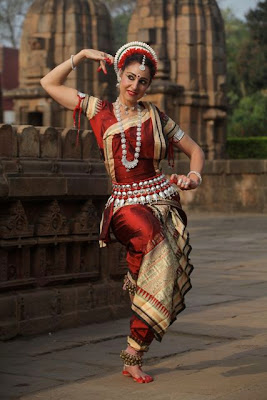Indian is a diverse country in many senses; diverse climate, diverse language, diverse religion, diverse cuisine, diverse art forms and diverse people. When all these diversities come together, they make a great Nation like “India” popularly defined as “Unity in Diversity”. These diversities have made India a unique country with a unique culture.
When we talk about the diverse art forms of India, one of these is Dance. They are also diverse and varied. The Dance forms in India can be broadly divided into two categories; Classical dances and Folk dances. The classical dance forms are spiritual where as folk dances are a symbol of celebration, fun and enjoyment with a flavor of spirituality and religiousness.
The classical dances of India are an integral part of Indian culture and play an important role in Indian History. The traces of these dance forms are more than a century old and hail from different parts of the country. The folk dances represent regional cultural ethos and beliefs. Each form of Indian folk dance has a specific and different costume and rhythm, these costumes are generation old and adorned with embroideries and motifs. These colorful dresses have extensive designs depicting the regional culture and extensive jewels accompany them.
Bharatnatyam
It is one of the popular classical dances in India. It is more popular in Southern states(Karnataka and Tamil Nadu) of India than the rest of the country. The dance form is believed to be more than 2000 year old. It is said, “LordBrahma to Bharata, a famous sage who then codified this sacred dance in a Sanskrit text called the Natya Shastra, revealed Bharatnatyam”. The Natya Shastra is one of the fundamental treatises on Indian drama and aesthetics.
Kathak
It is one of the most important classical dances of India. Kathak is a word derived from “Katha” which literally means story. The Kathak is a dance form which involves the art of storytelling in the form of a dance. Kathak was originated in Northern India and is similar to Bharatnattyam. In ancient India, there were Kathakars or bards who used to recite religious and mythological tales to the accompaniment music, mime and dance.
Kathakali
It is another form of Indian classical dance where the dancers depict a play, which is generally mythological. Kathakali is famous for its heavy costumes, jewelry and Makeup. It is said that it takes up to 3 – 4 hours for the make up to fix and settle down. The vibrant use of colors in the costume as well as in makeup make to more interesting and full of excitement. Today, Kathakali has become an inseparable part of Kerala’s culture. Kathakali have become the most recognized icon of Kerala.
Kuchipudi
The Dance form derived its name form a village in South Indian state of Andhra Pradesh. The name of the village is Kuchipudi. This dance form exhibits scenes from hindu legends, epics and mythological stories in a combination of act, dance and music.
Manipuri
This dance form hails from the North-eastern state of India, Manipur and derives its name from it. The Manipuri dance id rooted deep in the culture of Manipur and Manipuri people. The Manipuri dance form is mostly ritualistic and draws heavily from the rich culture of the state of Manipur.
Mohiniattam
Mohiniattam is a classical dance form of Kerala. Mohiniattam is derived from "Mohini", which means “beautiful woman who wins everyone’s heart” and "attam" means dance. Thus, Mohiniattam is a dance form that depicts beautiful feminine style with flawless light and flowing body movements. Mohiniattam was a dance form for devadasi in Kerala and later accepted as one ot the major classical dances of India
Odissi
It is one of the famous classical Indian dances from Orissa state. The history of Odissi dance is almost two thousand years old. Odissi is a highly inspired, passionate, ecstatic and sensuous form of dance. Like most of the South Indian classical dances of India Odissi too had its origin in the Devadasi tradition. The state of Orissa has a great cultural history.
For more updates and news join us on facebook
OR
log on to www.faltooclub.com
OR
log on to www.faltooclub.com
















No comments:
Post a Comment